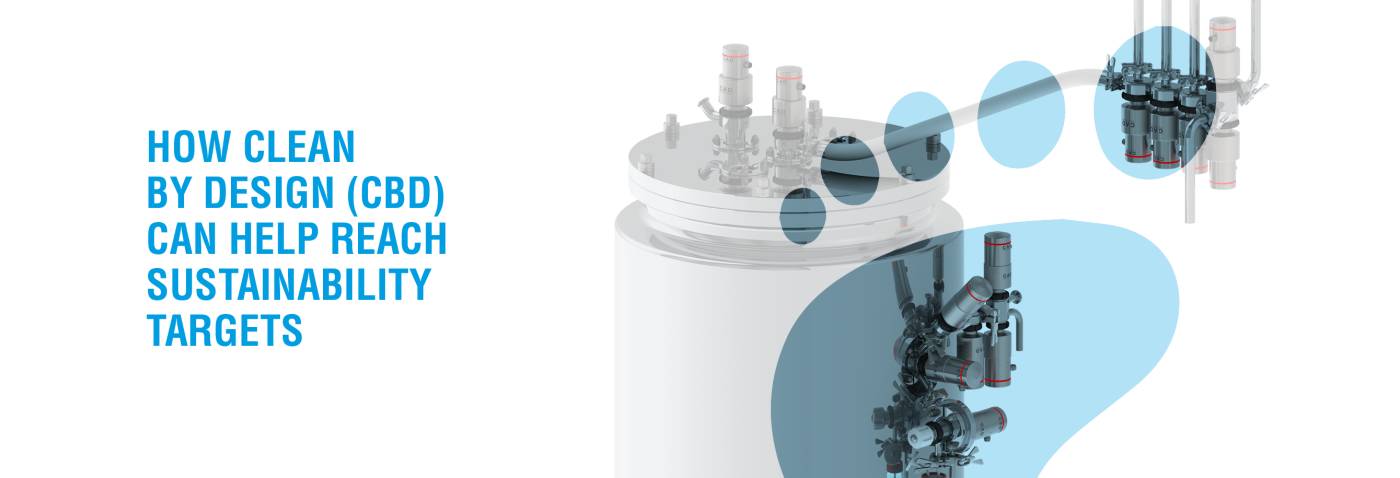HOW CLEAN BY DESIGN (CBD) CAN HELP REACH SUSTAINABILITY TARGETS

Cleaning, cleaning validation and cleanability
Much has been written about cleaning and cleaning validation in pharmaceutical and bioprocessing applications (see some examples in [Ref 1-5] below). Much, much less has been written about designing systems, pipework, process machinery and vessels to be EASY and QUICK to clean in a ROBUST manner. CIP cleaning is used by about 70% of the bioprocessing facilities globally. Nearly all of these facilities apply an "overkill" CIP cleaning process due to the fact that the facility and critical components have not been designed to clean easily. At the time of the original design of these systems a 20 year patent seemed a long time, generic or biosimilar competitors hardly existed and the end-customer had little or no possibility to negotiate the selling price - so margins were high and the overall operational cost (OPEX) did not come under much scrutiny. Unfortunately these original designs are still being used - major engineering companies are copy/pasting designs from several decades ago. This is good business for them: minimum design time, no risk - finish the project before scheduled and take the medals (and the money). They have recently started to reduce some dead legs (now that T-bodies exist in weir-type valves) - but these valves remain difficult to clean with CIP - resulting in long and chemically aggressive overkill CIP cycles (which, in turn, wreak havoc with diaphragms and gaskets). The other 30% of bioprocessing facilities - including Samsung Biologics (the world's largest bioprocessing facility by current and also 2022 bioreactor capacity) - continue changing all elastomers at product changeover and manual/COP cleaning valves, etc.. This seems somewhat sad in a world of mRNA, perfusion and multi-billion dollar annual sales for many products. Removing dead legs completely, improving drainage, decreasing pipework total volume and surface area, ensuring ALL vessel-mounted valve diaphragms (especially vent valves) and instrumentation, etc. are directly impinged by CIP spray (the "A" in "TACT" is VERY influential) and using CIP-friendly valves and other components decreases CIP time & water usage by over 80% (assuming a current weir-type P&ID with radial diaphragm TOV).